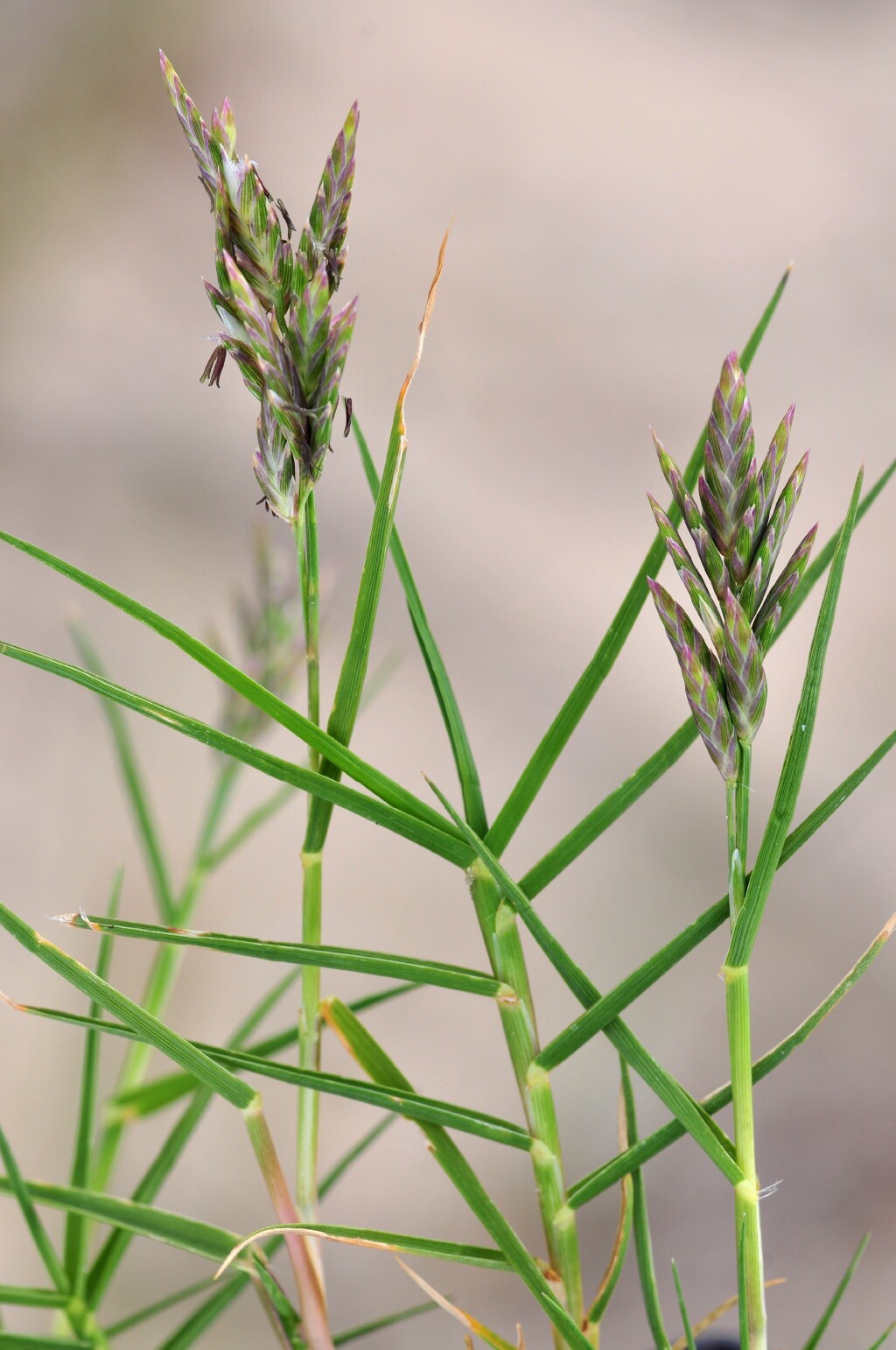Distichlis distichophylla
(Labill.) Fassett Australian Salt-grassStems long-creeping, with leafy parts usually erect, to 20 cm high (sometimes more if ascending through taller vegetation). Leaves strongly distichous, smooth and glabrous or nearly so; blade strongly incurved, rather stiff and sharp-pointed, mostly to 5 cm long and 4 mm wide; ligule to 0.5 mm (often only c. 0.1 mm) long. Inflorescence a compact raceme of (2–)c. 4(–10) overlapping spikelets, both sexes similar. Spikelets 6–14-flowered, lanceolate, 9–16 mm long; glumes acute to acuminate, 4–6 mm long; lemmas resembling glumes but usually slightly longer. Flowers Oct.–Apr.
LoM, MuM, Wim, GleP, Brid, VVP, VRiv, RobP, MuF, GipP, OtP, WaP, Gold, CVU, GGr, DunT, EGL, EGU, WPro, OtR, Strz. Also WA, SA, NSW, Tas. Common in wetter areas (e.g. fringes of saltmarsh) and low dunes along the Victorian coast. Occasional by salt-lakes on the basalt plains (e.g. near Camperdown), in a few areas of the west and north-west (e.g. Wyperfeld National Park, Wail near Horsham, Mt Arapiles) and with an isolated central Victorian occurrence at Laanecoorie Reservoir near Dunolly.
Walsh, N.G. (1994). Poaceae. In: Walsh, N.G.; Entwisle, T.J., Flora of Victoria Vol. 2, Ferns and Allied Plants, Conifers and Monocotyledons, pp. 356–627. Inkata Press, Melbourne.
 Spinning
Spinning



